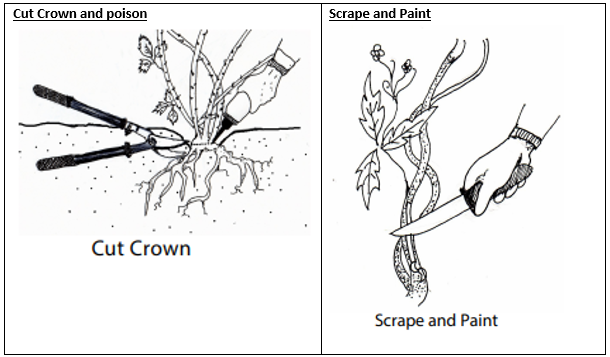- Details
Declared a noxious weed.
A native of Europe. Blackberry is an erect scrambling perennial shrub with long arching thorny canes which grow up to 2-3 metres (6ft-10ft) in height and are deciduous on Mount Wilson and Mount Irvine. The many white flowers are followed by berries which are green, turning red then black as they ripen in February and March.
The berries which contain the seeds are spread by birds all over the Mountain and quickly form new plants in ideal conditions. The canes will also grow by suckering, so a large dense prickly bush will soon form.
A combined effort by landowners and the Council is now needed annually to control Blackberry on some private land where it is a big problem, causing continual reinfestation of the reserves and roadsides.
Control
- Dig out small plants.
- Spray fruiting plants November to January, non-fruiting plants up to March.
- Cut crown and poison: For mature plants with a woody crown (root ball) – the cut crown method is very effective. It involves removing soil from the base of the plant where it's coming from the ground and cutting through the crown at the widest point to create maximum surface area to apply herbicide.
- Scrap and Paint: For all other plants - seedlings, juvenile and mature without accessible root crown, scrape and paint canes. Paint every stem for 300mm (8in- 12in) of its length

Herbicides
- Spray - Tree and Blackberry killer
- Paint - Tree and Blackberry killer or Glyphosphate (Roundup)
Please note special care must be taken when using herbicides and especially Glyphosate. The MWPA accepts no responsibility for the use or application of any chemicals. Always check the labels and Safety Data Sheets for all chemicals and use only as directed. For more details on herbicides refer to the additional information sources below.
